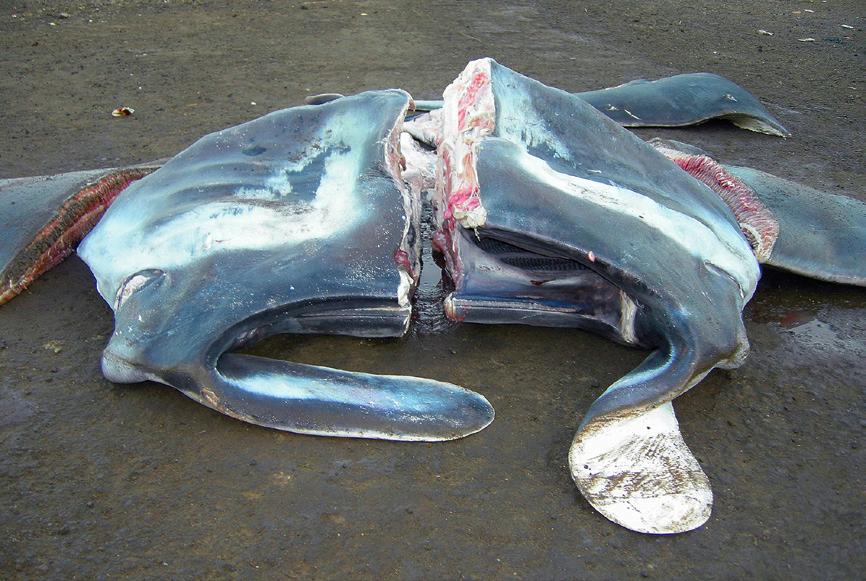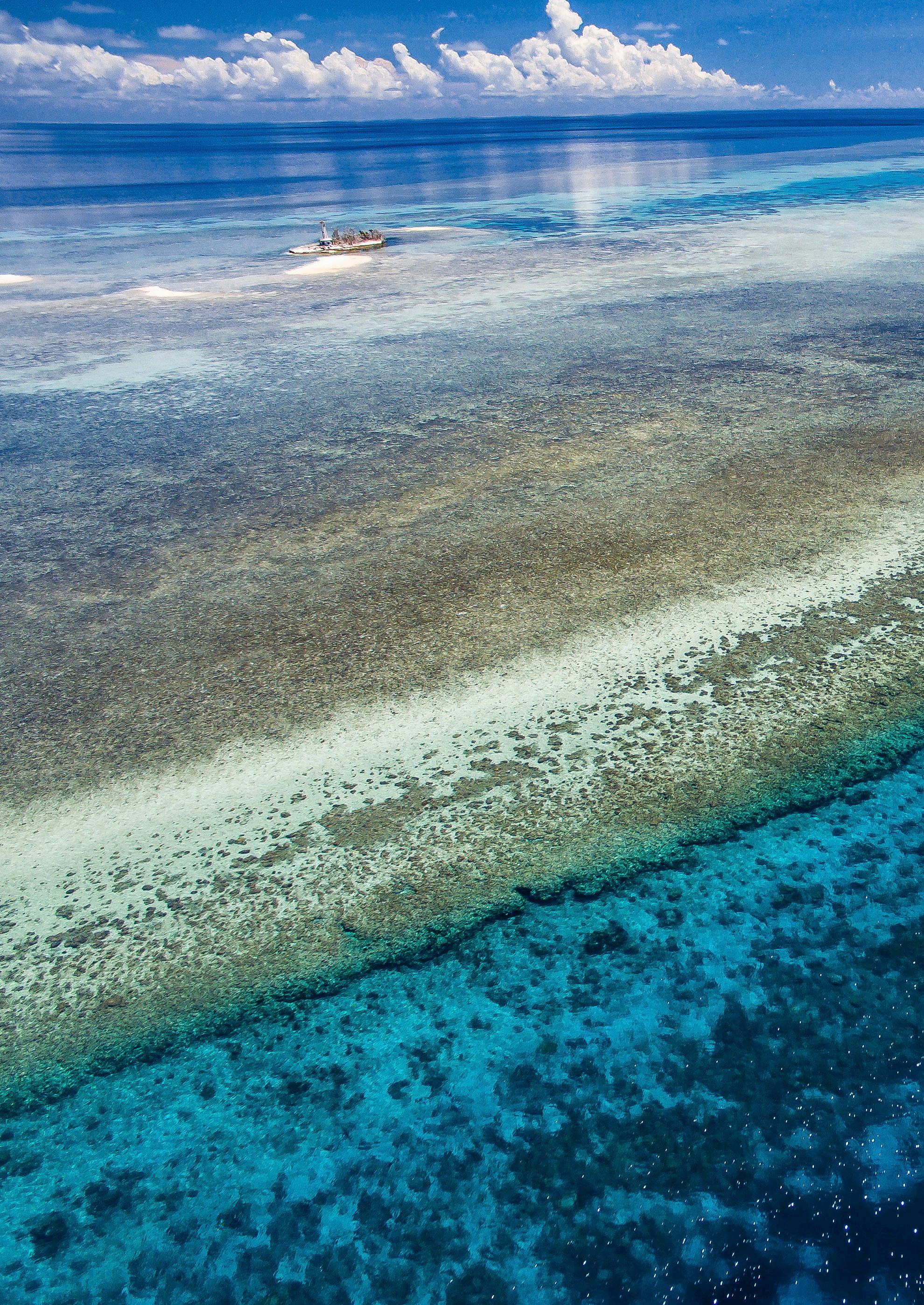FEATURES
VOLUNTEERS REMOVE GHOSTNETS
FROM RAS AL KHAIMAH WRECK FEATURE AND PHOTOGRAPHY SAAD D BHATTY
Photo by Dario Trombetta
When a fishing net entangles on a wreck or a reef, most of it is usually abandoned. This is because it is impossible for a fishing vessel to salvage the net (even from a shallow wreck) without diver assistance. The net, made from indestructible synthetic material, immediately starts killing indiscriminately. It takes several years for the net to degrade enough so it no longer poses a hazard to marine life.
but this was a hazard they had already been briefed about.
After two decades of diving, I have seen my fair share of pointless death at the hands of ghost nets, abandoned fish traps and recreational monofilament fishing line. And it has been three years now since seafood has been banned from my dining table; a silent protest against commercial fishing where up to 40 percent of each day’s catch is discarded. Each year, thousands of dolphins, sharks, rays and turtles die for no reason whatsoever.
I surmised the shark had entered the net at a lower level, perhaps somewhere on the main deck and then had been unable to escape. Scratches on its side and snout bore silent witness to its struggle against the wreck’s sharp edges and the unyielding net. I wonder for how long it frantically swam around desperately trying to find a way out.
Earlier this year in January, with benign sea conditions and reports of decent visibility (both a rarity for the shallower RAK wrecks), two students and I visited a seldomly dived tug boat sitting upright in about 20 metres of water. The students were completing their PADI Advanced Open Water and this was their “Wreck Dive”. Unfortunately, the wreck was almost entirely covered by fishing net, 32
DIVERS FOR THE ENVIRONMENT | MARCH 2021
What I had not prepared them for was the sight of countless dead and dying fish, trapped in endless miles of net. The tragedy culminated in the distressing spectacle of a large blacktip reef shark, its final resting place above the tug’s pilot house. This wreck was a graveyard.
Positioning the shocked students where I could keep an eye on them, I immediately cut away the net around the immediate vicinity of the dead shark. My objective was to create a large exit point which may help the next shark who got trapped. In the short time remaining, we circled the wreck and I cut free various small fish which gratefully swam away. The trickiest bit was freeing a large barracuda which had a hook in its mouth on a steel wire, which in turn was entangled with the net. I
think it sensed I was trying to help because it did not once try to bite me, although I was fully aware of the risk I was taking by putting my un-gloved hands so close to a distressed animal’s mouth. My trusty EMT shears struggled to cut the strong steel wire, the barracuda thrashing wildly did not help matters, but eventually the shears bit through and the barracuda was free. I would have liked to remove the hook, but the animal was already too stressed. The shears were retired later that day with full military honours. Back at the dive centre, I reported the wreck’s appalling condition to the centre’s owner and we immediately decided to launch a net clearing mission the very next day. Given the depth and enormity of the task at hand, plus the real risk of diver entanglement, we opted to restrict ourselves to a small team of six divers already experienced with advanced net clearing. The call went out and within an hour we had all the help we needed (thank you WhatsApp). Since I had already surveyed the extent of the situation, it was easy to plan the mission. The four single-cylinder divers (including the dive centre owner) would make two dives and focus on the upper deck, the bow area
















